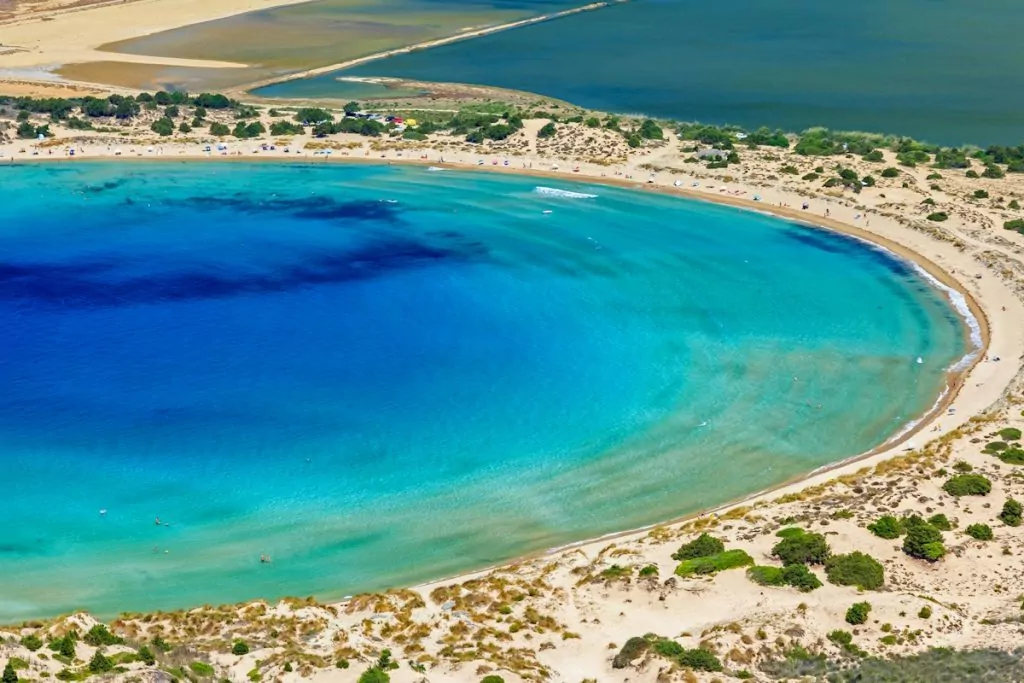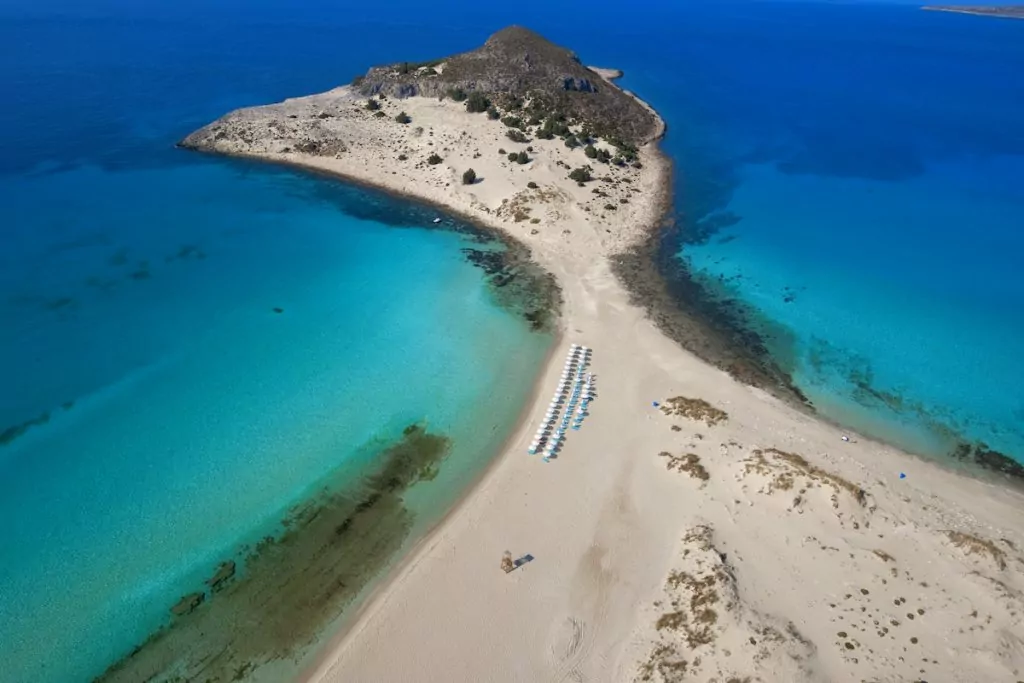Today we present a guest article by Visit Greece
Table of contents
Peloponnese
Peloponnese - where myth meets history. Monuments from every period of its eventful history and major archaeological sites: ancient Olympia, Epidaurus, Mycenae, Tiryns, the Temple of Apollo Epikourios, and Byzantine churches and monasteries.
Peloponnese with its bay, Corinthos, Patras, Saronic, Messinia, Argolida and Laconia. The area looks like a plane leaf, which is why it was formerly called "Morias".

Read more: Peloponnese
Elafonissos
Elafonissos, just 300 metres from Pounta on the Peloponnese coast, has a history of about 5,000 years. The island was inhabited from the third and second millennium BC, as evidenced by prehistoric findings.
During the Peloponnesian War, this was a battlefield between the Athenians and the Spartans, as the former had fortified the isthmus that at that time connected the island to Pounta. From 1839 to 1850 the island belonged to the British, who considered it part of the Ionian Islands.

Read more: Elafonissos
Nafplio
Nafplio is one of the most beautiful cities in the region of Argolis (in the eastern Peloponnese) and one of the most romantic cities in all of Greece. Nafplio was the first capital of the newly born Greek state between 1823 and 1834.

Read more: Nafplio
Monemvasia
Founded by the Byzantines in the 5th century, Monemvasia is a breathtaking medieval tower city located on the south-eastern coast of the Peloponnese.
Take the opportunity to explore this mysterious stone-built settlement, nestled on the edge of a large seaside cliff, and immerse yourself in a unique medieval atmosphere!

Read more: Monemvasia
Lakoniki Mani
Lakoniki Mani where you can see and enjoy stone houses and impressive towers next to cactus trees, beautiful old tower villages, impressive caves, Byzantine churches, beautiful beaches and unique local gastronomy. Let yourself be taken by the wild beauty of the cliffs next to the sea.

Kalamata
Kalamata, the capital and central harbour of Messinia, is located on the site of ancient Farai. After independence from the Turks and thanks to the exploitation of the fertile Messinian lands (production of olive oil, raisins, figs etc), it developed into a rich city centre and a significant port. It is located 238 kilometres southwest of Athens.

Read more: Kalamata City Tour
Epidaurus
Epidauros: for many people, this word brings to mind the city's ancient theatre (circa 340-330 BC), a famous monument included in the UNESCO World Heritage List as part of the sanctuary of Asclepius, the god of medicine for the ancient Greeks.

Read more: Epidaurus
Mycenae
Mycenae - the legendary Agamemnon The city of Homer and other authors of ancient Greek tragedies have associated their names with memories that have passed into the collective unconscious of humanity. Agamemnon and Menelaus, Danaë and Perseus, Pelops and Atreus are the apparent ancestors of all Europe, and the birthplace of all these historical figures is golden Mycenae.

Read more: Mycenae
Ancient Olympia
Ancient Olympia grew to become the most famous sacred site in ancient Greece, and the birthplace of the Olympic Games, the most important sporting event of all antiquity: from 776 BC, all Greeks - across the then known world - would unite every four years and all hostilities would be suspended so that everyone could participate in these games in the true spirit of sport.

Read more: Ancient Olympia















Ditte says:
We are now in Greece on a small island in the north called Thasos. Small-scale and quiet and suits us perfectly. Few tourists now but the Greeks come in August. Not much to do and that's how we wanted it. I am practising walking without a crutch and making progress.
We used to boat a lot in Greece and it is something we like and to find small odd islands. Fun with your future trip here.
15 June 2023 - 10:28
snort says:
Our youngest daughter worked in a small town outside Kalamata there for a season and of course I visited. Enjoyed the region very much.
15 June 2023 - 14:52
Margaretha Spångberg says:
Going down...through Europe with the motorhome! Landing after 17 hours of boat trip in Igouminitsa on the mainland (the boat from Ancona) on Wednesday next week. Then down towards my favourite place Poros beach on the island of Lefkas!!!
15 June 2023 - 21:35